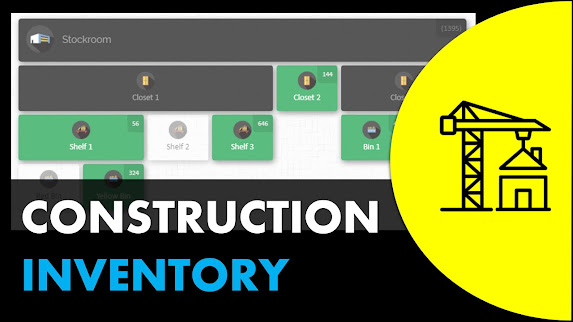Construction Inventory Management System: Tools and Techniques for Success
In the fast-paced world of construction, efficient inventory management is crucial for project success. Construction inventory management systems (CIMS) offer advanced tools and techniques to streamline inventory processes, optimize resource utilization, and ensure project timelines are met. In this article, we will delve into the key tools and techniques provided by construction inventory management systems and how they contribute to project success.
1. Real-time Inventory Tracking:
Construction inventory management systems provide real-time tracking of materials, equipment, and supplies throughout the project lifecycle. With barcode scanning, RFID technology, and GPS tracking, project managers can monitor inventory levels, locations, and movements in real-time. This level of visibility allows for better decision-making, as project teams can quickly identify shortages, locate materials, and prevent delays.
2. Automated Procurement:
Automation is a cornerstone of modern construction inventory management systems. These systems automate procurement processes, from requisition to payment, reducing manual errors and streamlining workflows. By integrating with supplier databases and leveraging AI-driven algorithms, construction inventory management systems can generate purchase orders, track approvals, and manage vendor relationships seamlessly. This automation saves time, reduces administrative overhead, and ensures materials are procured promptly.
3. Demand Forecasting and Planning:
Accurate demand forecasting is essential for optimizing inventory levels and preventing shortages or overstocking. Construction inventory management systems utilize historical data, project timelines, and demand patterns to forecast future inventory needs. By analyzing data trends and projecting material requirements, project managers can proactively plan procurement and allocate resources more effectively. This proactive approach minimizes waste, reduces costs, and ensures materials are available when needed.
4. Inventory Optimization:
Construction inventory management systems offer tools to optimize inventory levels and minimize carrying costs. These systems utilize inventory optimization algorithms to determine the optimal quantity of materials to keep on hand based on factors such as project requirements, lead times, and storage constraints. By maintaining optimal inventory levels, construction companies can reduce excess inventory, free up warehouse space, and improve cash flow.
5. Integration with Project Management Software:
Integration with project management software is essential for seamless collaboration and data sharing across project teams. Construction inventory management systems integrate with project management platforms, allowing for real-time updates on inventory status, procurement activities, and project milestones. This integration improves communication, enhances transparency, and ensures all stakeholders have access to the latest information.
Conclusion:
Construction inventory management systems are invaluable tools for streamlining inventory processes, optimizing resource utilization, and ensuring project success. By providing real-time inventory tracking, automating procurement processes, forecasting demand, optimizing inventory levels, and integrating with project management software, these systems empower construction companies to manage their inventory more efficiently and effectively. As the construction industry continues to evolve, investing in a robust construction inventory management system will be essential for staying competitive and meeting the demands of modern construction projects.




Comments
Post a Comment